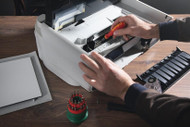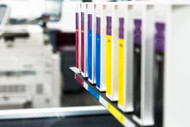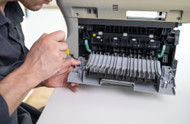Ink Cartridges and Fading : Tips for Long - Lasting Prints
Printed documents and photographs are cherished memories and valuable records, so it's essential to ensure they withstand the test of time. Fading is a common concern when it comes to printed materials, but with proper care and attention, you can extend the longevity of your prints. Here are some tips for long-lasting prints when it comes to ink cartridges and minimizing fading.
- Use High-Quality Ink Cartridges: Investing in high-quality ink cartridges is crucial for long-lasting prints. Genuine ink cartridges from the printer manufacturer are formulated to provide optimal performance and fade resistance. Generic or third-party cartridges may not offer the same quality or fade-resistant properties, potentially leading to faster fading of prints. Stick to genuine cartridges to ensure the best results.
- Choose Archival-Quality Inks: Archival-quality inks are specifically designed to resist fading and offer longevity. These inks contain pigment-based formulations that provide enhanced resistance to environmental factors, such as light and moisture. Consider using archival-quality inks when printing photographs or documents that you want to preserve for an extended period.
- Select Acid-Free and Archival-Quality Paper: The type of paper you choose for printing also plays a significant role in the longevity of your prints. Acid-free and archival-quality papers are designed to resist fading and deterioration. These papers are specifically treated to neutralize acids that can cause the paper to yellow or degrade over time. When printing important documents or photographs, use acid-free and archival-quality paper to ensure long-lasting prints.
- Store Prints Properly: How you store your prints can significantly impact their lifespan. Keep your prints away from direct sunlight or sources of UV light, as UV rays can accelerate fading. Store them in a cool, dry place to minimize exposure to moisture, which can cause ink to run or paper to warp. Consider using acid-free sleeves, albums, or archival storage boxes to protect your prints from environmental factors.
- Frame Prints with UV-Resistant Glass: If you plan on displaying your prints, consider framing them with UV-resistant glass or acrylic. These materials provide an additional layer of protection against UV rays, reducing the risk of fading. UV-resistant glass blocks a significant amount of UV radiation, helping to preserve the vibrancy and longevity of your prints.
- Avoid Displaying Prints in Direct Sunlight: Direct sunlight is a primary cause of print fading. Avoid displaying your prints in areas where they are exposed to direct sunlight for prolonged periods. If you must display prints in a well-lit area, consider using curtains or blinds to filter out harmful UV rays during peak sunlight hours.
- Limit Exposure to Environmental Factors: Environmental factors such as humidity, temperature fluctuations, and pollutants can contribute to print fading. Keep prints away from areas prone to high humidity, extreme temperatures, or airborne pollutants. Ensure proper ventilation in the storage area to maintain a stable environment.
- Make Copies or Backups: To further protect your prints, consider making copies or backups of important documents or photographs. This ensures that you have additional copies in case the original print fades or gets damaged over time. Digital copies stored on multiple devices or in cloud storage provide an extra layer of security.
By following these tips, you can help minimize fading and ensure long-lasting prints. Using high-quality ink cartridges, choosing archival-quality inks and paper, proper storage, framing with UV-resistant materials, limiting exposure to sunlight and environmental factors, and creating backups all contribute to preserving the vibrancy and longevity of your prints. With proper care, your prints can stand the test of time and continue to bring joy for years to come.





